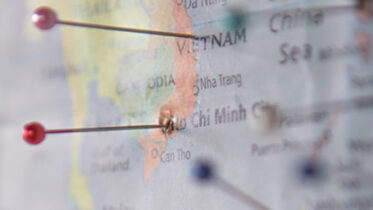Trade Dress: Is it a complement for brands?
- 12 December 2022
- Articles
When we talk about a brand, the general public thinks about the label on a pair of pants, on the side of some sneakers, or on the front of a bottle of soda. It is the “distinctive mark” of a product and that allows us (among other things) to optimize our time as consumers (Posner), ensuring a homogeneity that humans appreciate given our natural aversion to risks.
However, it is not always convenient or useful to seek the protection solely on trademarks. In addition to the substantial increase in costs that implies increasing protection (more products or services and more territories), particular difficulties related to—for example—non-conventional brands referring to sounds, colors, or smells may arise and the constant evolution of consumers’ tastes. This can sometimes make—just as it happens with fashion and industrial designs—the investment unprofitable in as few as a couple of years. Thus, the concept of “trade dress” arises as a closing element of a global protection of our intangible assets.
“Trade dress” is a legal figure of American origin (“Two Pesos, Inc. vs. Taco Cabana, Inc.”, 1992) of purely jurisprudential configuration that, in summary, protects the “visual identity” of a trade and characterizes it in front of its competitors, achieving a distinctive position in the market (PC of Cordoba, 2017). It is often linked to the franchise system (Art. 2 of the R.D. 2485/1998 on Franchises, already repealed, stated that “a uniform presentation of locals or of means of transportation”), but does not depend on it for its consideration or protection.
This figure, due to its lack of registry nature, mainly finds acknowledgement by means of the Unfair Competition Law (1991), which allows for the impediment of both imitation acts that cause confusion in consumers and those of free riding, the latter being the most common, if we consider that, usually, the brands of the establishment or product will be different from one another. An institution, that of unfair competition, which, contrary to brands protecting an exclusive position of use, seeks to ensure a proper functioning of the market, without distortions.
That it is a perfect complement for the trademark protection regime (mainly) is long known in Spanish practice as far back as 2003. In that year, the Provincial Court of Madrid condemned a Spanish restaurant chain by constructing “an instance of copying an entrepreneurial initiative, of the crude imitation of the entrepreneurial system designed by the plaintiff to exploit establishments or natural fast-food restaurants”. That case is an excellent example of how a set of elements of the establishment (combination of colors used in signs and awnings; interior appearance with industrial aluminum griddles, metallic stools with red seats, exhaust fans in sight; food wrappings, cups, and tablecloths or personnel’s wardrobe) may be recognized as an intangible heritage that may be successfully defended in front of misuses and improper uses made by other competitors. Therefore, as our Supreme Court states (2011) “the commercial presentation of products –“trade dress”- plays an important role in the market, regarding global image with which these are presented to consumers to influence on their decision”.
However, “trade dress” is useful not only for commercial establishments. Thus, we have examples of it in the food industry, where in addition to containers, we can detect a very high value in the shapes of products, such as candy or snacks; in the pharmaceutical sector, with the phenomenon of iso or bio appearance and use of colors and identical or very similar shapes among different drugs and their containers; in the catering and hotel business with the presentations of dishes or menus or in entertainment, both in games in their structure and in toys themselves. We cannot also forget the irruption of the “metaverse phenomenon” and cryptoassets, where “trade dress” is seen as a very useful tool, for example, in “virtual parallel worlds”.
“Trade dress” should not only be identified but also protected and proactively promoted. Undoubtedly, the first step is achieving homogenization by demanding its adoption from suppliers and associates by contractual means. It will also be necessary to plant the seed of “trade dress” into the consumer’s mind, ultimately leading to an immediate and unequivocal association to our business. Last but not always avoidable, we must keep litigation in mind as the ultimate weapon of recognition of our commercial image in front of the competition, which will logically seek to copy our “trade dress” with greater intensity the more unique and successful our proposal gets.
In summary, in a society with countless alternatives and quality consumption options, a “trade dress” correctly valued and structured by professionals that helps in the identification of those singular elements of the business can make all the difference in front of the competition, and a safe reinforcement of the industrial and intellectual property portfolio of the company.








